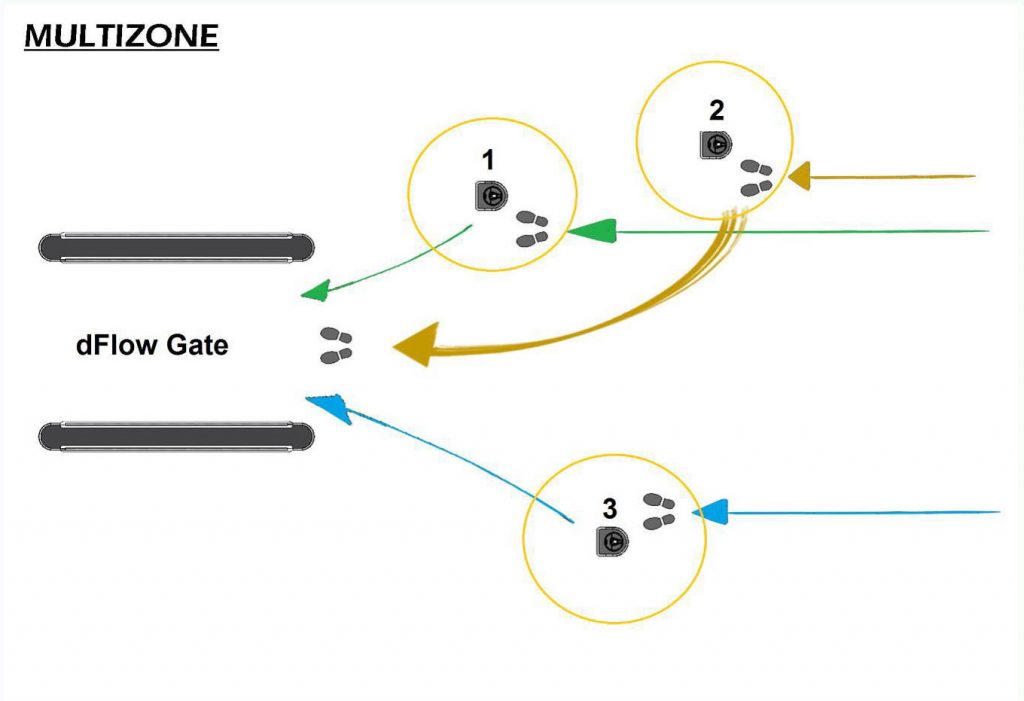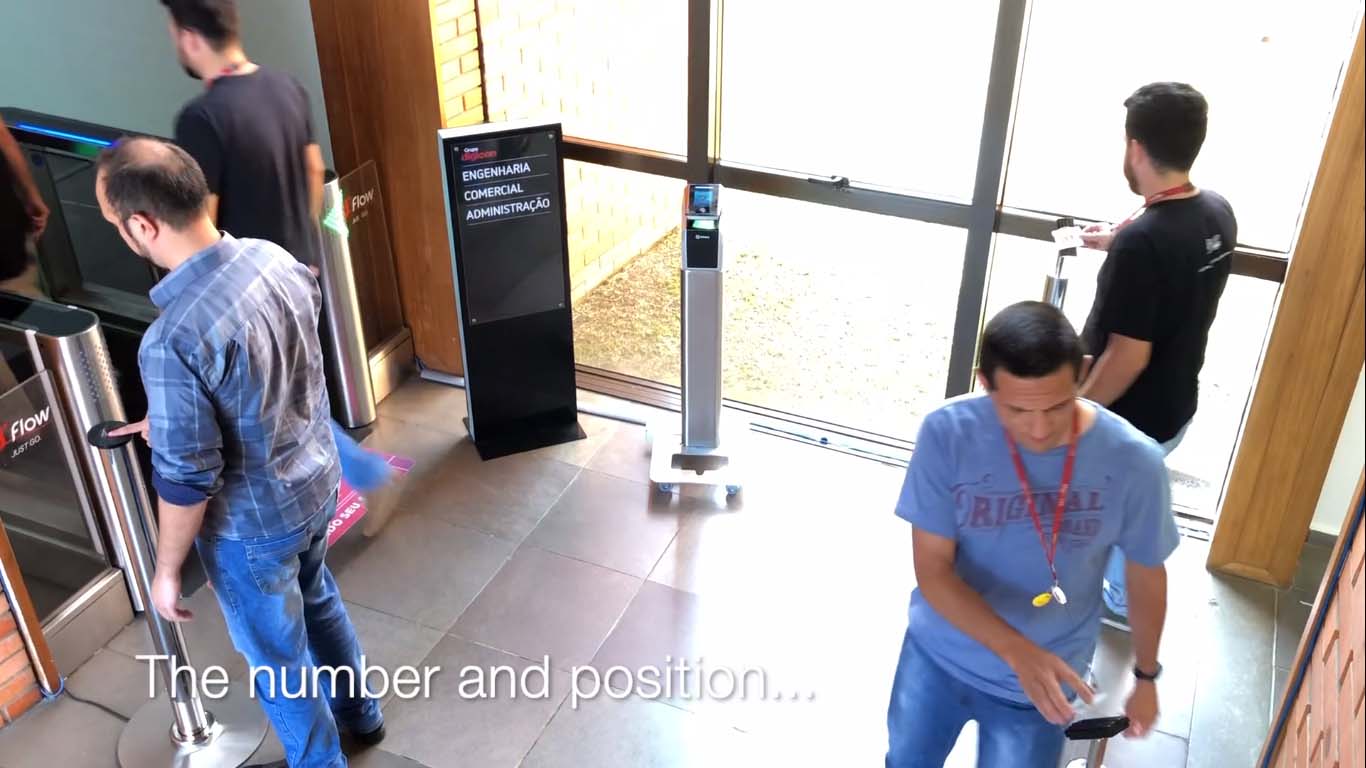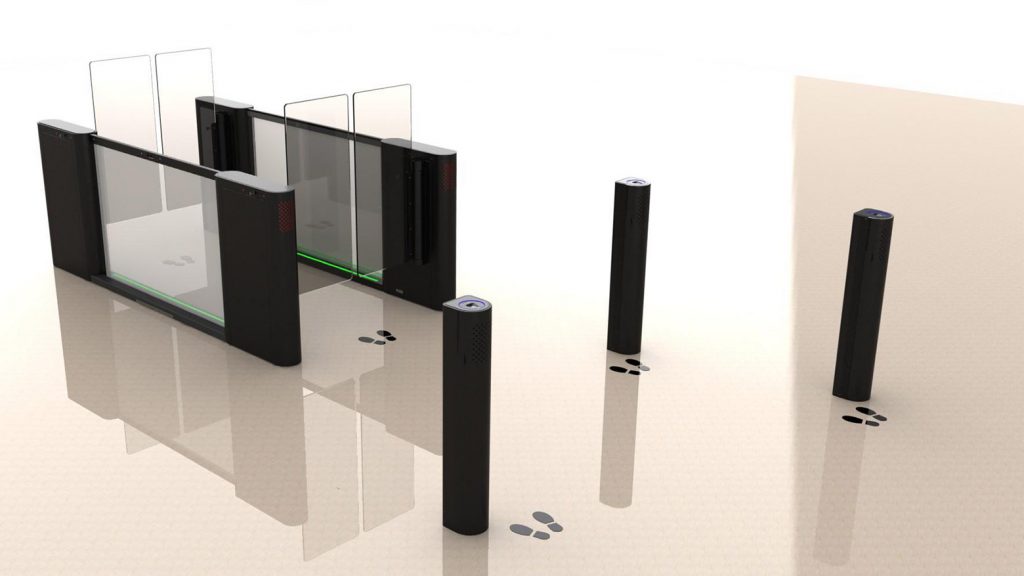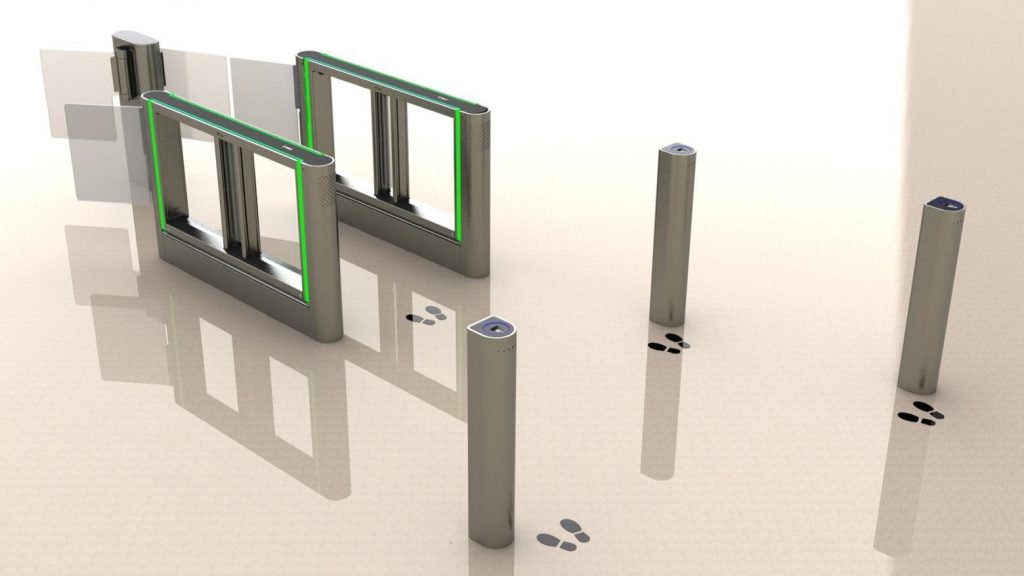Multizone Concept
Multizone Technology for Airports & High Throughput Infrastructure
This new concept is the result of a vision to innovate in the access control market where the same technology have been used for over 30 years. The dFlow technology allows flexibility in the way of access control by its normally open gates. It gives the freedom to implement any technology, being especially interesting for applications with non-contact biometrics such as facial, iris and finger on the fly. With contactless biometrics and normally open doors one can imagine true frictionless access control at very high flow rates. We believe that the concept is a very good complement to non-contact biometrics - helping provide a walkthrough, frictionless experience for users, while maintaining a higher level of security.
Together with this innovation, we will now have the possibility of multiple validations using dFlow technology, creating the Multizone concept. We believe that additional security features with higher true frictionless flows are aligned with the future vision of passenger terminals in airports.
How the Multizone Concept Works
With the Multizone we broaden the validation experience. Imagine having multiple simultaneous validations for a single gate that optimize flow and access! The capability of our overhead sensor makes it possible to create a validation area in front of the gate. This area, is monitored with precision by the overhead sensor and the Digicon tracking algorithm.
Since we have this area in front of the monitored gate, we can distribute some validation totems there and thus define an X, Y coordinate of their positions and create a smaller validation area around each of the totems.
Each user / person entering this validation zone is tracked by it’s X-, Y-coordinates and is considered by the system as an unauthorized user. When a user approaches a totem in the validation zone and performs the validation, it receives a valid credentials and is now authorized and allowed to walk through the gate.
When multiple users perform simultaneous validations, they can all pass through the gate because the system knows their X, Y coordinates and can track each of the person, letting only the authorized users walk through the gate.
The big advantage by having multiple validation totems in front of the gate, is that one person validating will not block the access to the gate for others. Higher people throughput can be achieved by just adding more totems, not more gates, so there is a very important economic equation to be considered.
Also it is important to note that the gate is now independent from the token thus providing flexibility in the future of changing the token used without affecting the gate. We made it more practical and reduced the integration effort.
Figure 1 below graphically illustrates how the multizone extends the validation area:

Below is a simulation of the products layout when using the multizone technology:






